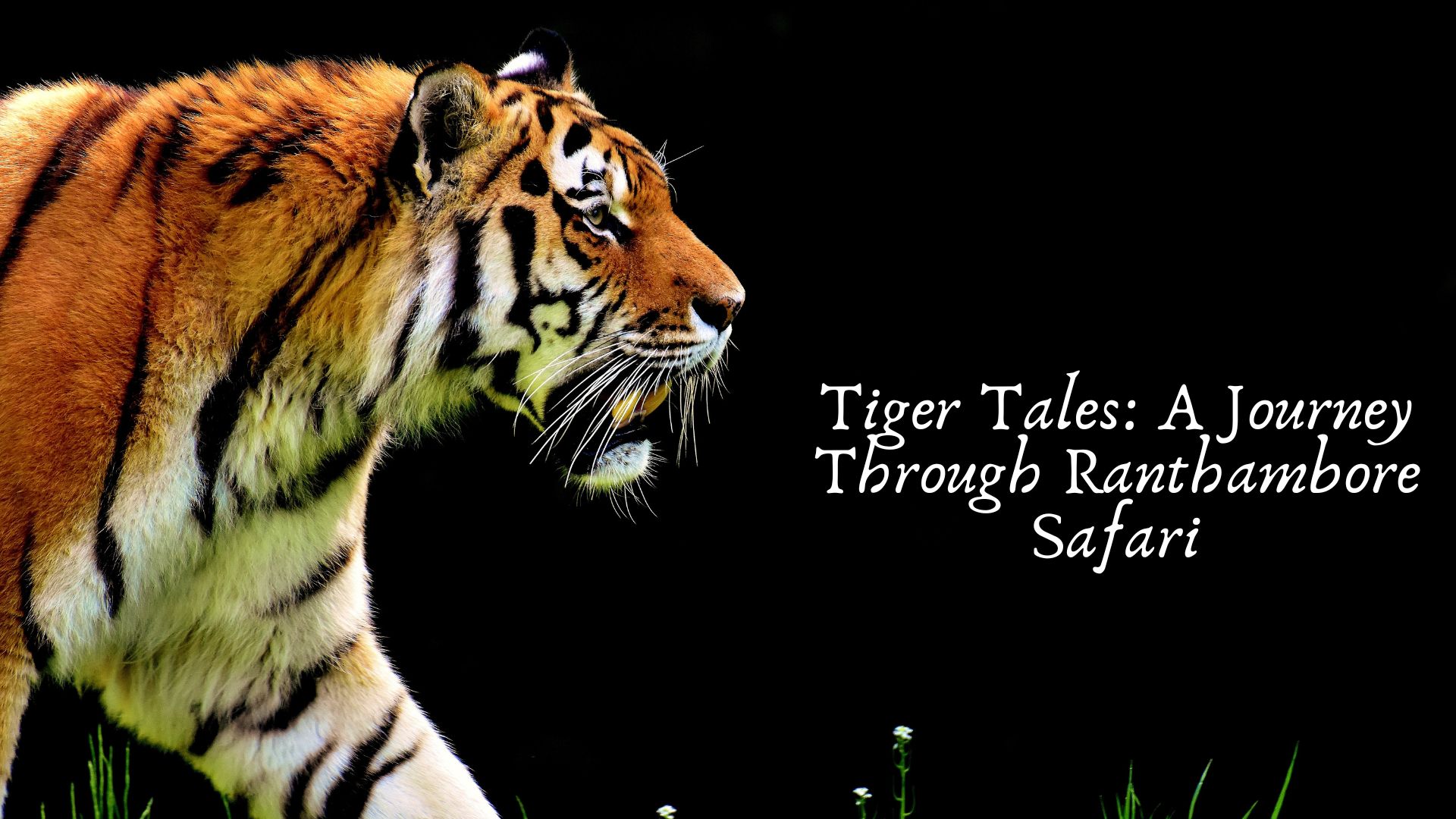Introduction
Nestled in the southeastern region of Rajasthan, India, lies Ranthambore National Park—a sanctuary that epitomizes the raw beauty and wild spirit of India’s wildlife heritage. Renowned for its population of Bengal tigers, the park offers a thrilling safari experience that promises both adventure and tranquility. “Tiger Tales: A Journey Through Ranthambore Safari” seeks to capture the essence of this remarkable park, exploring its history, biodiversity, and the awe-inspiring encounters that make it a must-visit destination for wildlife enthusiasts and nature lovers alike.
Historical Background
Ranthambore’s history is as rich and varied as its wildlife. Once the private hunting grounds of the Maharajas of Jaipur, the area was declared a wildlife sanctuary in 1955 and gained National Park status in 1980. The park covers approximately 392 square kilometers, featuring a landscape that combines the rugged terrain of the Aravalli and Vindhya hill ranges with lush forests and vast grasslands.
The heart of Ranthambore is its ancient fort, a UNESCO World Heritage site, which dates back to the 10th century. This fort, perched on a high hill, offers a glimpse into the region’s storied past, with its ruins standing as silent witnesses to centuries of history. The fort’s strategic location and formidable architecture once made it a coveted possession for various rulers, adding a historical mystique to the safari experience.
Biodiversity and Wildlife
Ranthambore National Park is a biodiversity hotspot, home to an impressive variety of flora and fauna. The park’s diverse ecosystem includes dry deciduous forests, open grasslands, and several water bodies, creating ideal habitats for a wide range of species.
Flora
The vegetation in Ranthambore is predominantly dry deciduous forest, with Dhok (Anogeissus pendula) being the most common tree species. Other significant flora includes Banyan, Peepal, and various species of Acacia. The park also boasts several lakes and water bodies, including Padam Talao, Rajbagh Talao, and Malik Talao, which are crucial for sustaining the wildlife, especially during the dry season.
Fauna
While Ranthambore is synonymous with its tiger population, the park is also home to an array of other wildlife. Key inhabitants include:
-
Bengal Tigers: The primary attraction, these majestic predators are often seen patrolling their territories or cooling off in the waterholes.
-
Leopards: More elusive than tigers, leopards inhabit the higher, more rugged terrain of the park.
-
Herbivores: Spotted deer (chital), sambar deer, blue bull (nilgai), and wild boar are commonly seen grazing in the grasslands and near water sources.
-
Birds: Ranthambore is a birdwatcher’s paradise with over 300 species, including peacocks, kingfishers, and the Great Indian Hornbill.
-
Reptiles: The park also hosts a variety of reptiles such as marsh crocodiles, monitor lizards, and several species of snakes.
The Safari Experience
Embarking on a safari in Ranthambore is an exhilarating experience that combines the thrill of wildlife spotting with the serene beauty of nature. The park is divided into ten zones, each offering unique landscapes and opportunities for animal sightings.
Types of Safaris
There are two main types of safaris in Ranthambore: Jeep safaris and Canter safaris.
-
Jeep Safari: This is a more intimate experience with smaller groups of up to six people, allowing for better maneuverability and access to less-traveled areas.
-
Canter Safari: Larger vehicles that can accommodate up to 20 people, ideal for larger groups and a more communal experience.
Both safari types are led by experienced guides and naturalists who enhance the experience with their knowledge of the park and its inhabitants.
Best Times to Visit
The best time to visit Ranthambore is from October to June, with the peak season being between November and March. During these months, the weather is pleasant, and the chances of spotting tigers and other wildlife are higher, especially around water bodies.
Notable Safari Zones
-
Zone 3: Known for its picturesque lakes and high tiger sighting probability.
-
Zone 4: Famous for the resident tigress, Arrowhead, and her cubs.
-
Zone 5: A prime area for spotting tigers due to its dense vegetation and water sources.
Conservation Efforts
Ranthambore’s conservation success story is a testament to dedicated efforts by the government and various NGOs. The park is a critical part of Project Tiger, an initiative launched in 1973 to protect the endangered Bengal tiger.
Key conservation strategies include:
-
Anti-Poaching Measures: Robust anti-poaching patrols and surveillance to protect the tiger population.
-
Habitat Management: Efforts to maintain and restore natural habitats, ensuring a balanced ecosystem.
-
Community Involvement: Engaging local communities in conservation through education and eco-tourism initiatives, providing them with alternative livelihoods.
Despite these efforts, challenges such as poaching, human-wildlife conflict, and habitat degradation remain. Continuous efforts and adaptive management strategies are crucial to ensuring the long-term survival of Ranthambore’s tigers and other wildlife.
Personal Encounters and Stories
A journey through Ranthambore is incomplete without recounting personal encounters and stories that highlight the park’s allure.
One such story is of a photographer who, after days of patient tracking, finally encountered the legendary tigress Machli, known as the Queen of Ranthambore. Machli, with her strikingly beautiful stripes and regal demeanor, not only allowed close photographs but also displayed a series of behaviors that made for an unforgettable experience. Her legacy lives on, as she contributed significantly to the park’s tiger population.
Another memorable tale is of a group of tourists who, while on a jeep safari, witnessed a rare and dramatic confrontation between a tiger and a crocodile at the edge of a lake. The raw power and strategic prowess displayed by both predators offered a rare glimpse into the survival dynamics of Ranthambore’s ecosystem.
Conclusion
Ranthambore National Park is more than just a wildlife destination; it is a testament to the resilience of nature and the success of conservation efforts. “Tiger Tales: A Journey Through Ranthambore Safari” is an invitation to experience the park’s splendor, from its rich history and diverse ecosystems to the thrilling wildlife encounters that await every visitor. Whether you are a seasoned wildlife enthusiast or a first-time visitor, Ranthambore promises an adventure that will leave you with memories to cherish for a lifetime.
Name: Eye of The Tiger
Address: Kolkata, West Bengal, India
P.No.: 7003976182





